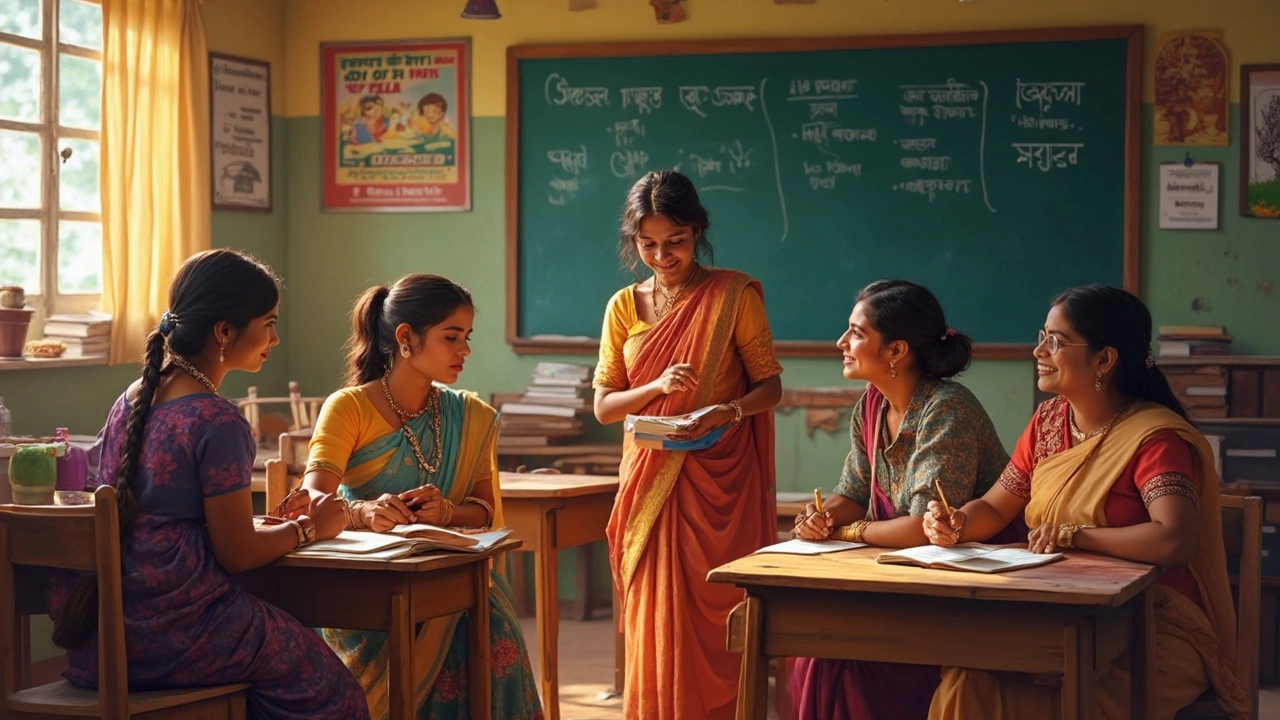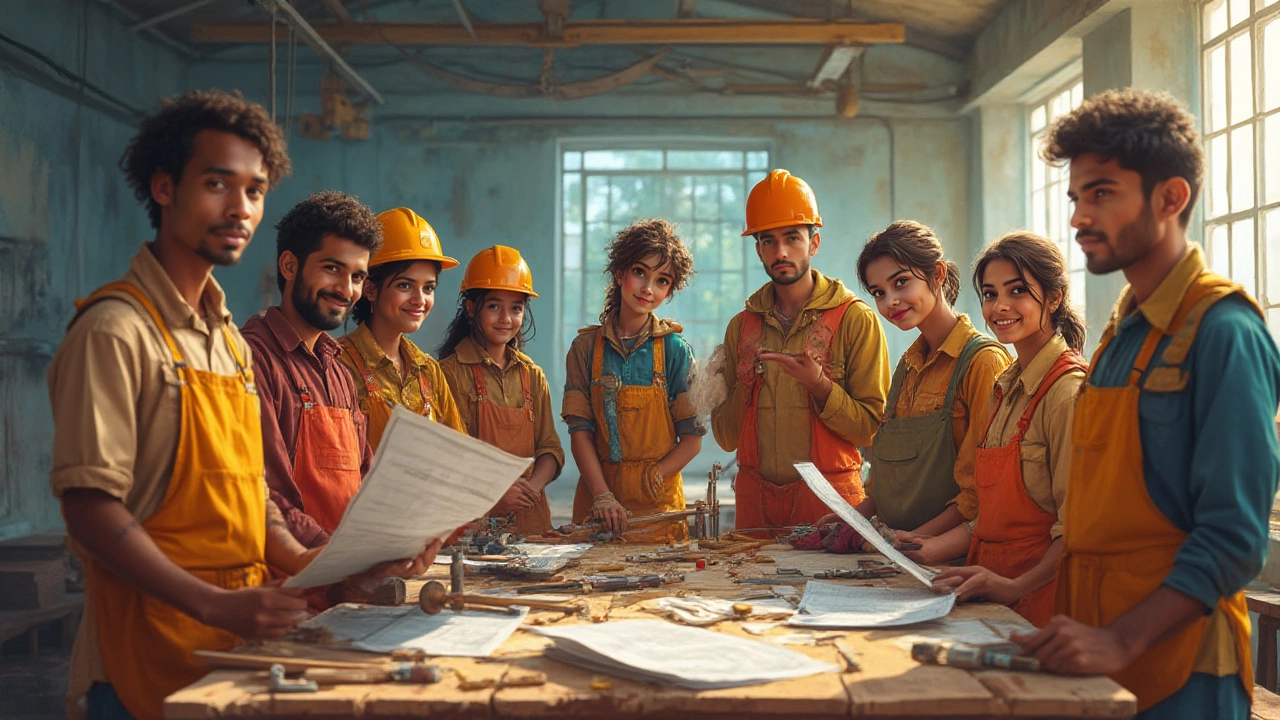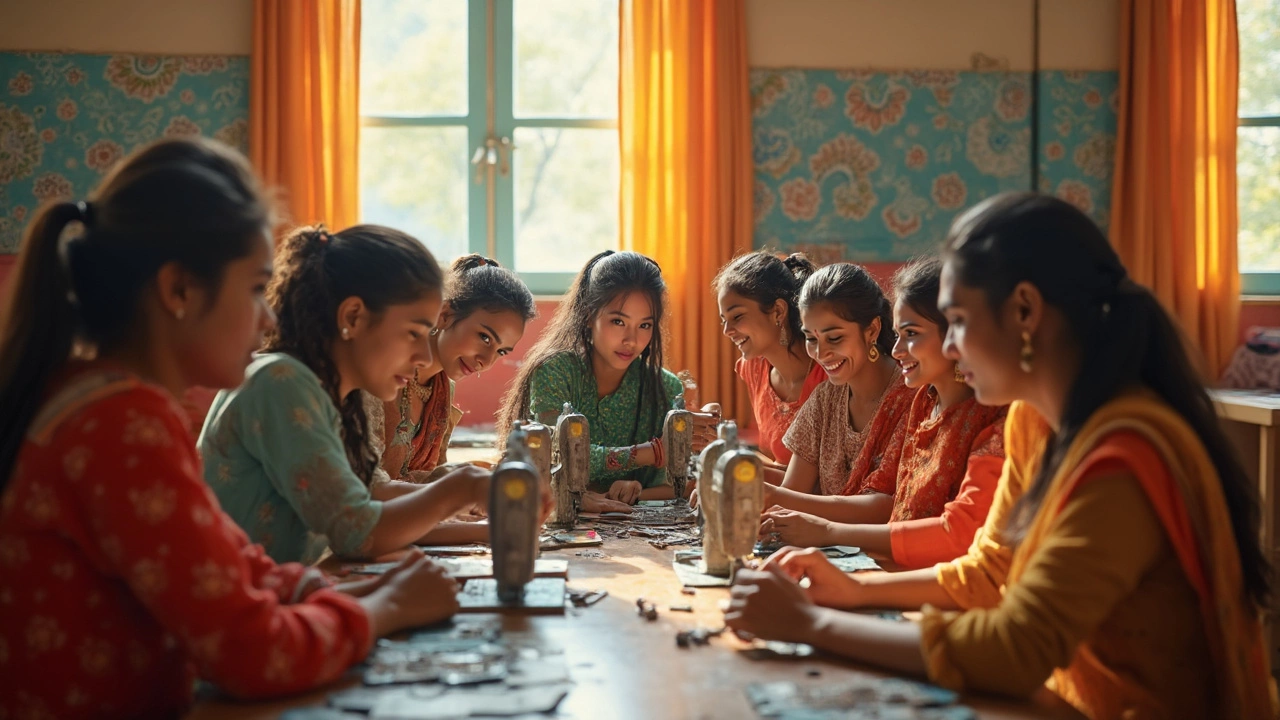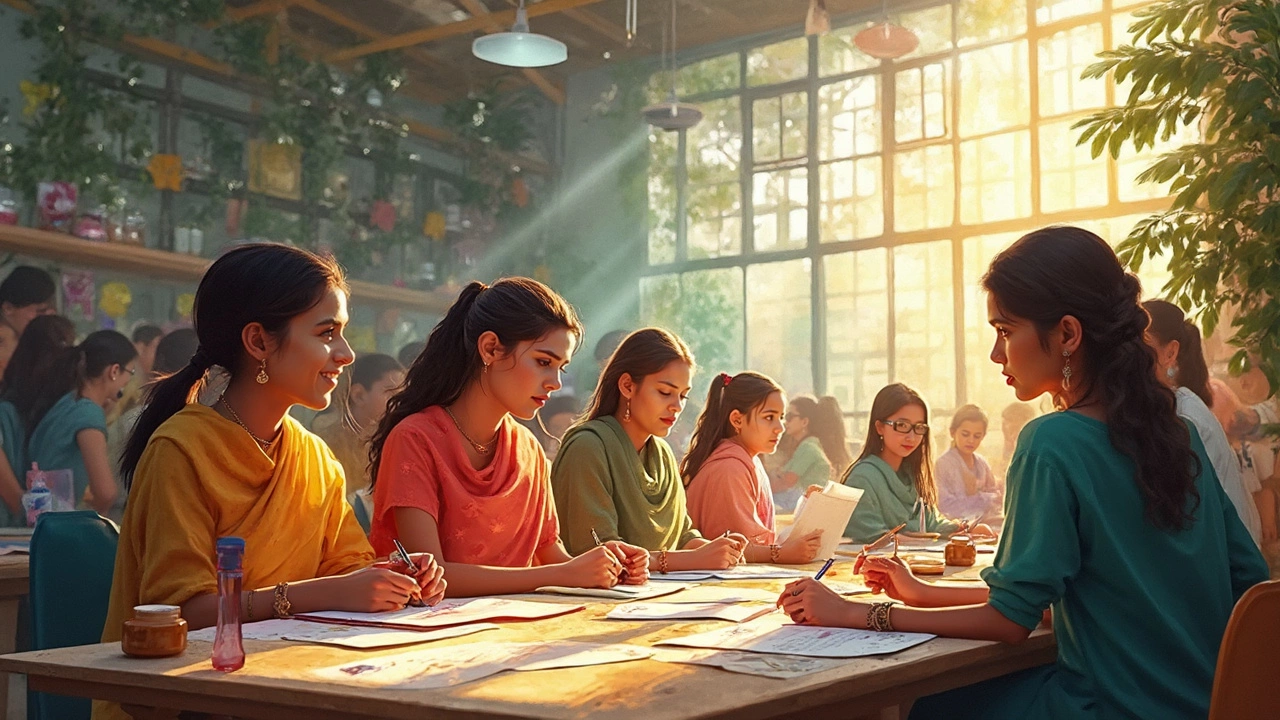Imagine a world where your daughter can’t go to school because of her gender. Until about 150 years ago, that was normal in most places. The right for women to get an education—including real, practical training for jobs—had to be fought for, step by step. It didn’t happen by chance, and it sure didn’t happen overnight.
Today, women outnumber men in many college classes, and tons of girls are learning skills that help them earn money and become independent. But who started all this? The story is packed with gutsy people who refused to accept ‘no’ as an answer and believed girls deserve the same shot as boys at learning and working.
Knowing who kicked these doors open isn’t just for history class. Their stories can show us how to boost opportunities for women now, especially when it comes to prep for real jobs. Stay with me. You might be surprised at how much difference a single voice—or action—can make for girls everywhere, even for someone like my daughter Nitya, who dreams of designing apps one day.
- Early Pioneers: The First Voices for Women's Schooling
- Vocational Training Takes the Spotlight
- Modern Advocates and Movements
- What You Can Do: Supporting Women's Education Today
Early Pioneers: The First Voices for Women's Schooling
Rewind to the 1800s. Sending girls to school just wasn’t something most folks did. Families thought girls should only learn housework or help with the family business. Then, bold women—and a few men—started really pushing back.
Take Mary Lyon, for example. In 1837, she founded the first college in the U.S. specifically for women—Mount Holyoke Female Seminary in Massachusetts. Her big idea? Girls deserved strong academics and practical skills, not just sewing and needlework. Her graduates went on to open schools and train other women, spreading the idea like wildfire.
In India, Savitribai Phule was out teaching girls in Pune by 1848, right when most Indian families would never send daughters to school. She and her husband started the first school for girls in the country. Local bullies even threw dung at her, but she kept going.
Here’s a quick look at how fast things moved once these pioneers got started:
| Year | Event | Location |
|---|---|---|
| 1792 | Mary Wollstonecraft publishes “A Vindication of the Rights of Woman” | UK |
| 1837 | Mary Lyon opens Mount Holyoke Female Seminary | USA |
| 1848 | Savitribai Phule starts first school for girls | India |
| 1868 | University of London admits women to degrees | UK |
One well-known secret? Early advocates weren’t just talking—they built schools, raised money, and even faced nasty threats. Emma Willard in the U.S. wrote to lawmakers about why women needed real education. In 1821, she opened the Troy Female Seminary where girls learned math, science, and geography—stuff only boys usually learned. By the late 1800s, thousands of girls were getting a serious education.
So, when we talk about women's education today, we’re standing on the shoulders of these fighters. Their stories show just how hard change comes—and why we can’t let folks forget how it all started.
Vocational Training Takes the Spotlight
Textbooks are great, but textbooks alone never paid the bills. For a long time, girls who managed to get into school were usually taught sewing, cooking, and sometimes a bit of reading or math—skills that helped with homemaking, but not much else. That started to change in the late 1800s, when trailblazers demanded real job training for women, not just a primer on housework.
Take Mary Lyon in the United States. She founded Mount Holyoke Female Seminary in 1837, and her big move was mixing academics with hands-on training. Students learned teaching, bookkeeping, and even some early science, so they could step into jobs, not just marriage. This idea caught on fast, especially with women who wanted to earn their own living—think young women working as teachers, nurses, typewriters (that was an actual job!), or shop assistants in booming city economies.
In India, women like Pandita Ramabai shook things up. In 1889, she set up the Mukti Mission, offering widowed and abandoned women skills such as printing, carpentry, and farming. She believed strong job skills were a ticket to independence. The Mukti Mission was an early example of a vocational school run by and for women, and it survived on donations, hard work, and pure stubbornness.
It wasn’t just famous figures either. Groups like the YWCA (Young Women’s Christian Association) started opening trade schools in cities around the world in the early 1900s, offering courses in nursing, weaving, office work, and more. They pushed the idea that women should be trained for “gainful employment,” not just sewing sundresses. This is when the phrase women's education started to mean real, marketable skills.
If you’re wondering what this looks like today: vocational training for women now covers everything from coding to car repairs. When I see my son Kian tinkering with gadgets or hear about his classmates’ robotics classes, I always hope girls get just as much access. The practical side of schooling—making things, fixing things, and learning trades—gives women more options, more freedom, and better paychecks. That’s why the fight for hands-on school training became such a huge deal and why it’s still not “job done” everywhere.
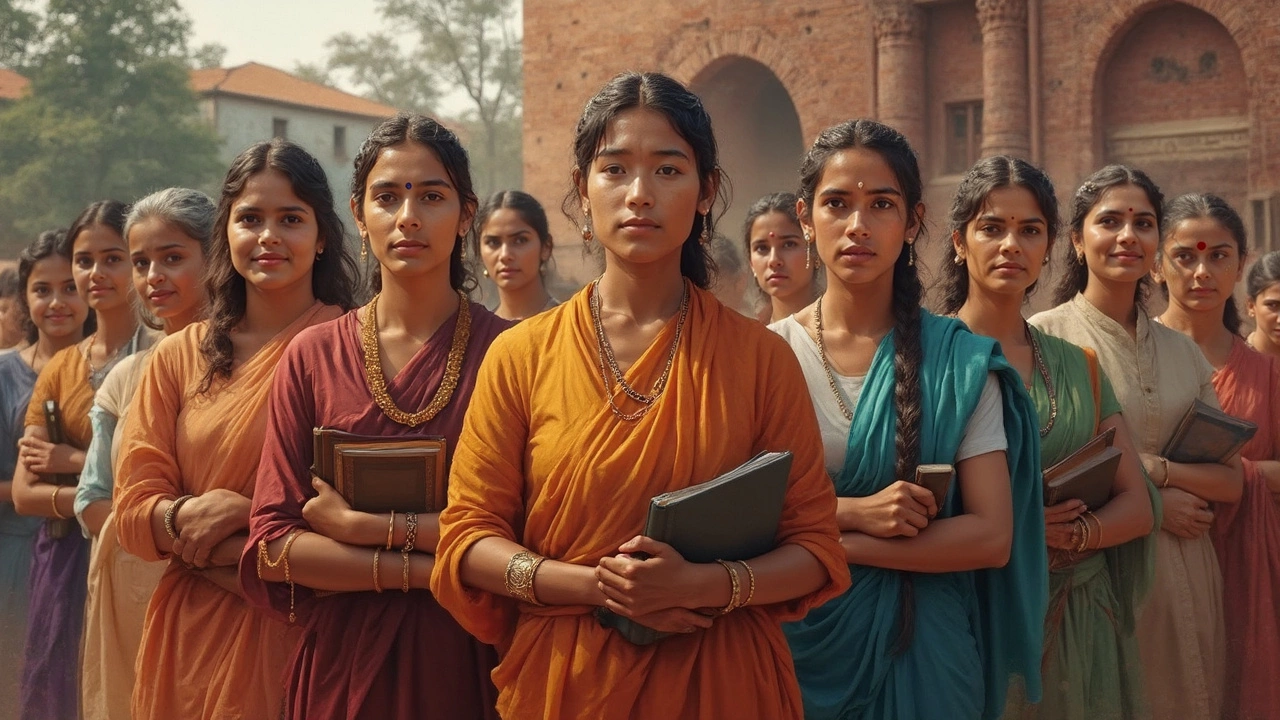
Modern Advocates and Movements
Turns out, some of the biggest wins for women's education happened in just the past few decades. In the 1990s, for example, Malala Yousafzai’s activism in Pakistan changed how the world saw girls’ right to learn. She took a bullet for standing up to the Taliban’s ban on girls in class, later becoming the youngest-ever Nobel laureate. Her story is the headline, but she's not the only one out there fighting for a girl’s right to pick up skills and build a career.
In Nigeria, a group called Girl Effect has rolled out programs to help teenage girls access vocational training and digital literacy classes. More than 20 million girls have joined their initiatives since 2005, according to their annual reports. These efforts focus on getting girls the hands-on skills that actually land jobs—from coding to sewing—giving them a fighting chance in the work world.
The United Nations has also pushed hard for change. Their "Educate a Child" program says every extra year of school for a girl can boost her future earnings by up to 20%. Check out these numbers:
| Country | % of Young Women in Vocational Training (2023) |
|---|---|
| India | 18% |
| Nigeria | 14% |
| Brazil | 23% |
| Germany | 35% |
So, what’s actually working these days? Here are a few moves that have made a real difference:
- Laws like India’s Right to Education Act made school compulsory for girls aged 6 to 14.
- Tech companies offering free training—think Google’s “Women Will” platform in Asia and Microsoft’s digital skills bootcamps in Africa.
- Grassroots mentorship, especially where women working in trades visit schools and show girls what's possible beyond traditional roles.
It’s not just about getting a diploma. All these programs connect girls with practical work experiences, internships, and real-life problem-solving so they’re ready for jobs. As Michelle Obama said when launching the Let Girls Learn campaign,
"When girls are educated, their countries become stronger and more prosperous."
It’s still a fight—old habits die hard in some places. But there’s real progress. If you walk into training centers in cities and even some rural villages now, you will see girls learning how to weld, code, design, run shops, you name it. And they’re not doing it alone; there’s a whole movement cheering them on.
What You Can Do: Supporting Women's Education Today
It’s easy to think the battle for women’s education is over, but there’s still a lot to do—especially in the area of vocational training for women. While more girls finish high school now than fifty years ago, only about 40% of women in places like India or Sub-Saharan Africa get the chance to learn job skills that really pay off, according to UNESCO’s 2023 education report. The gaps show up even in everyday stuff: fewer women sign up for IT, construction, or technical trades compared to men, both in developed and developing countries.
If you want to do your bit—whether you’re a parent, teacher, or just someone who cares—here’s how you can make a real difference:
- Encourage girls to try different fields early on. Expose them to coding, carpentry, robotics, or anything else, not just what’s ‘supposedly’ for women. Nitya, my daughter, joined a free city coding club at age 9, and now she’s helping her classmates debug their own programs.
- Support scholarships and training programs. Tons of NGOs and tech companies run women-only scholarships. Even a small donation can help a girl get a certificate or diploma that changes her future.
- Mentor or connect with local students. If you know something about a job or skill, offer to guide girls in your area. Sometimes a short conversation or shadowing at work can turn curiosity into courage.
- Share real stories. When women see role models—especially ones who look like them or come from similar backgrounds—they’re more likely to go after what they want. The old saying “can’t be what you can’t see” is true more often than not.
- Push for more inclusive policies. Ask schools and local leaders to offer vocational courses that welcome girls. This isn’t just for teachers; anyone can attend local school board meetings and ask for change.
Here’s a quick look at where things stand for women in vocational training around the world (2023 data):
| Country/Region | % Women in Vocational Training | Top Fields for Women |
|---|---|---|
| India | 38% | Health, Teaching, Textiles |
| Germany | 47% | Design, Health, Office Administration |
| Sub-Saharan Africa | 22% | Hairdressing, Fashion, Agriculture |
| USA | 49% | Business, Health, Culinary Arts |
Don’t just clap for the idea—get involved. Each time a girl gets access to good training, we’re one step closer to a world where careers really are for everyone. Even if it’s just sharing a free online course, helping with an application, or saying ‘Go for it!’ at the dinner table, your support counts.
